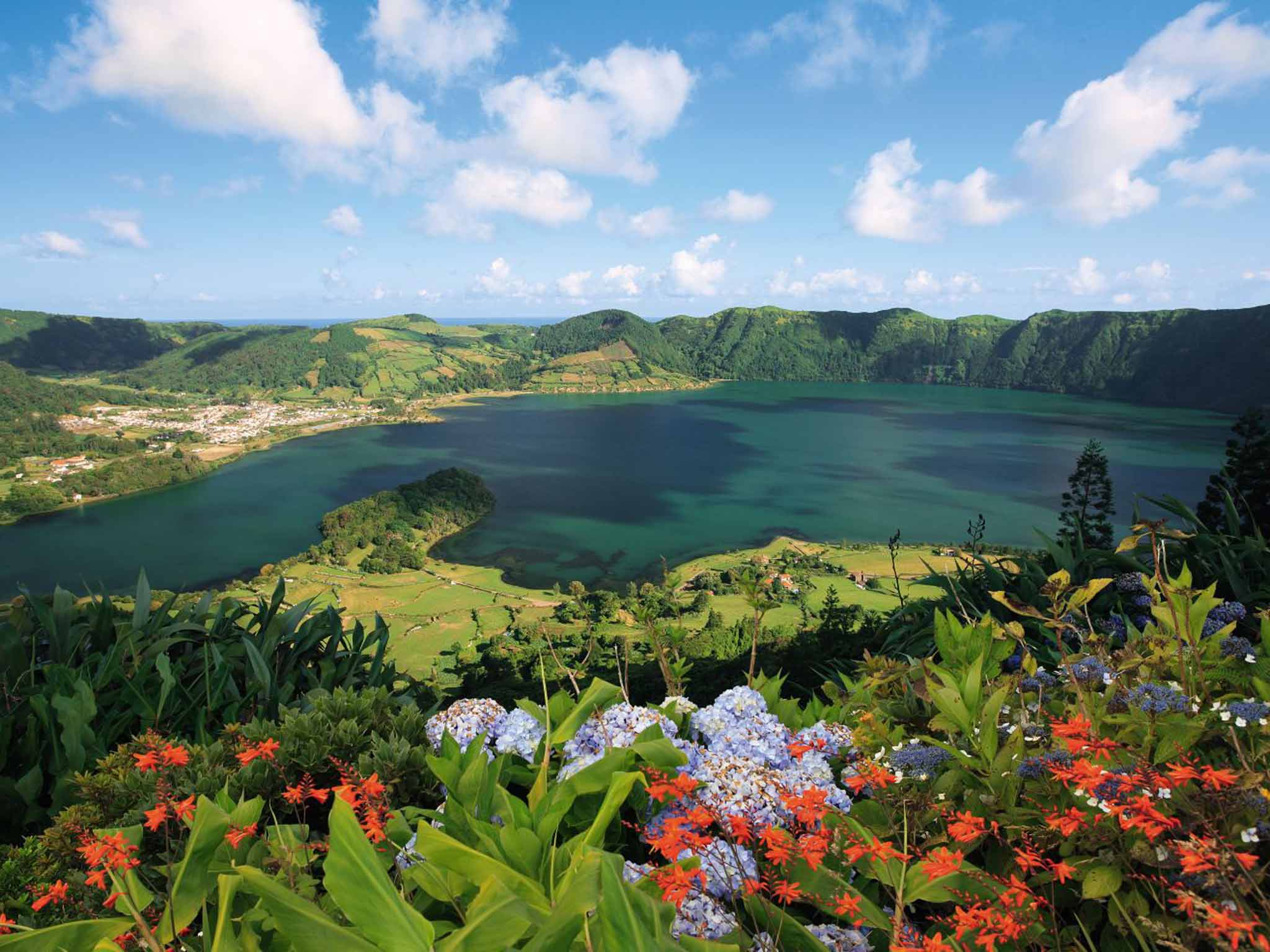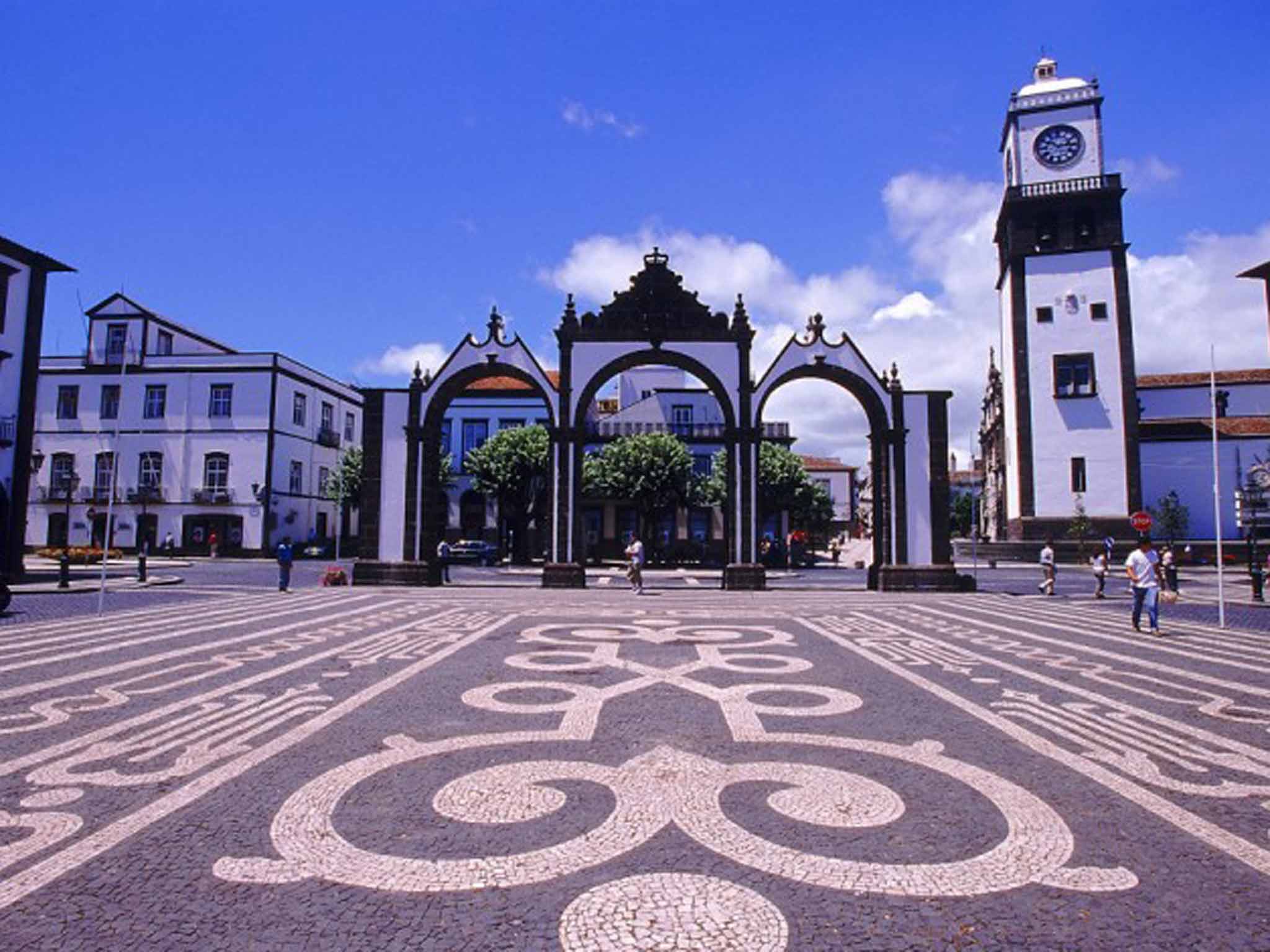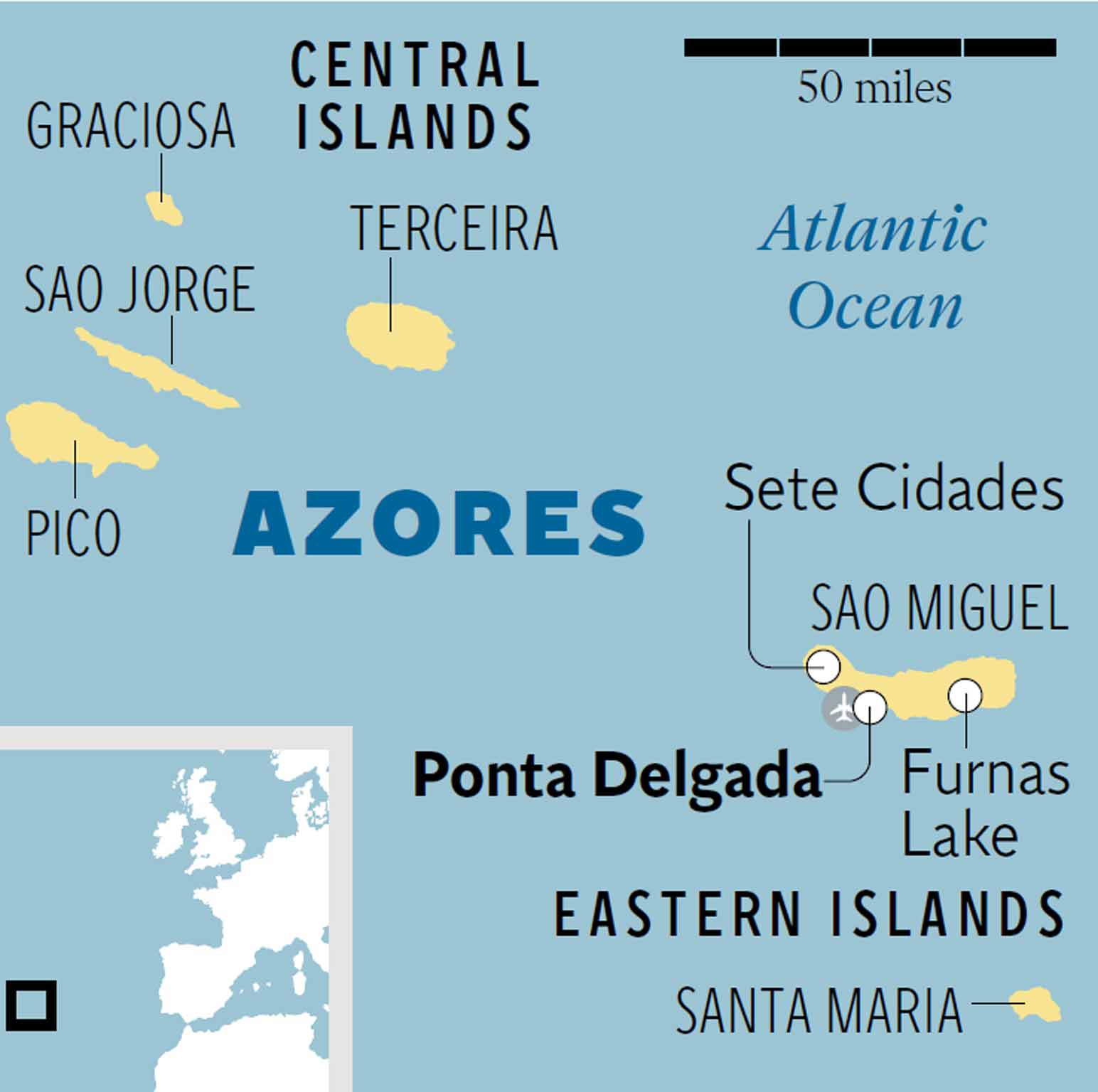Azores budget break: Cheap flights from Britain make Sao Miguel the ideal economy escape
These far-flung Portuguese islands have always been pricey to reach, but with low-cost flights now available, Simon Calder tests the waters

How much fun can you have in a no-frills week at the western edge of Europe? That was the purpose of my mission. But as I plunged into the water the notion of enjoyment wasn't uppermost in my mind.
Instead, I was thinking, approximately, "Goodness, even though I am wearing an ill-fitting wet-suit, the Atlantic is mighty cold." The next thought needs to be contemplated in the manner of comic-strip bubbles: "Instead of air I seem to have inhaled through this snorkel a great mouthful of ocean." After a few minutes I sorted myself, began to breathe as normally as the extreme cold allowed, and remembered the task I had been briefed on: swimming with dolphins, the gentle way (from the perspective of our flippered friends, at least). In some parts of the world, dolphins are incarcerated and taught how to push humans around big swimming pools with their noses. In the Azores they do things differently.
Humans are allowed to be dropped off the side of a Zodiac (inflatable boat) into the cetaceans' swimming pool, the Atlantic. As I paddled, I remembered being told to look down to see if the dolphins wanted to play or were merely amused by the aquatic complement to a fish out of water. So diligently did I peer into the depths of the world's second-biggest ocean that I swam head first into the boat. How they laughed (my wife and two daughters on the rib, that is, though the dolphins probably had a chuckle too).
Paula, the guide, helped me back aboard into the clammy embrace of a damp towel. How do you know, I asked her through chattering teeth, where to find the dolphins? I'd imagined she would say they were creatures of habit and usually gather here mid-morning. But no. She pointed to the rocky shore rising to either side of Sao Miguel's capital, Ponta Delgada. "We have spotters on the cliffs who see where the whales and dolphins are. Then they radio through to us." Until four decades ago, locals did exactly the same job for a more sinister purpose. They spotted sperm whales, and directed men rowing in open boats towards their prey. Today, marine mammals are more valuable alive. As demand for whale-watching surges, the Azores are perfectly positioned in mid-Atlantic.

Look at the back of a euro note. A tiny box to the bottom left of the map shows the islands sprinkled across the ocean in all their isolated glory. These islands are neither here, in Europe, nor there, in the Americas. Wander through the placid cobbled lanes of Ponta Delgada and you see how the Azores provided a prototype for the New World for 15th-century Portugal. The early settlers who arrived in hope or in despair infiltrated the folds of this crumpled volcanic landscape to create a grid of streets as straight as the contours would permit, then peppered it with a profusion of pretty churches. Little has changed.
This summer, though, the lanes are echoing with a few more footsteps as a benign invasion begins. The first cheap flights from Britain to the Azores have made Sao Miguel the ideal economy escape. Families keen on a cut-price adventure can start with the journey from Ponta Delgada's newly busy airport: you can walk into town, where you find the sort of value that I imagined had vanished, like the whalers, at some time in the 1970s.
Call me cheap, but one reason I dragged the family on a four-hour no-frills flight was because during the Easter holidays a flight to Ponta Delgada was only £110 return each – about one-third of the rate to the Canaries. Add about £750 for a decent hotel for the four of us, and the same again for a succession of activities booked through a very professional operator, and the basic trip came in at £2,000. And the experience was priceless.
Day one on Adventure Island – as Sao Miguel deserves to be known – was vile. The Atlantic thumped us with strong winds and sudden squalls. And we had a great time. Luis – one of a team of seemingly inexhaustible guides – loaded us into his van along with four mountain bikes. He drove us to Furnas Lake, where rainfall is prettily decanted into an extinct volcano. Our cycling circuit of the lake included two stops. First, we gasped our way to the top of a volcanic outcrop to get was a panorama of Sao Miguel's relentlessly rugged good looks: draped in lush foliage that is powered by sun and rain in equally profuse quantities. Next, we collected lunch. It was cooking below ground, in volcanic vents that seethed as I heaved out the pot of stew. To digest our whole earth lunch, we squelched through the rainforest to a torrential waterfall. Then we visited the only tea plantation in Portugal – a few minutes' drive away, as most things seem to be on an island the size of Anglesey.

As indigenous produce goes, the tea tasted fine. Not so Azorean wine – too sweet or too tart. Fortunately, the Portuguese keep the islands well provisioned with container ships bearing gifts. The red Dao wine isn't actually free, but it's not far off. Sao Miguel is probably the only place in Europe where a €2 half-litre of wine constitutes a pleasure, not a threat. Forgive my going on about money, but this was a Harrods holiday at Lidl prices.
For dinner, Luis recommended A Tasca in Sao Miguel's handsome basalt-and-marble core: furniture from ancient timber, tiles from a distant epoch, walls enlivened with modern art. I'll have the fresh tuna in sesame, medium rare, thanks. A fiver? Can I book again for Friday night?
The intervening days were relentlessly exhilarating. As the sun gently roasted the countryside, we climbed to the Lagoa do Fogo then plunged into the "lake of fire" to cool off with a swim. The guides conjured a picnic from their backpacks, and after the walk dropped us at the Volcanic Observatory. At no notice at all, the curator led us on an hour's journey into the restless earth.
Plate tectonics have been busy over the millennia in the mid-Atlantic. Naturally, the earth's forces have been harnessed at a sequence of pools and streams at Caldeira Velha in the middle of the island; €2 buys the best the wellness industry could create. Scalding water charged with superheated minerals bombarded my body in the manner of a belligerent Marrakech masseur. Except for the profusion of flowers, I could have been in that other great Atlantic volcanic venue, Iceland.
Blue Lagoon? They've got one in Sao Miguel. But unlike its Nordic near-neighbour, this one shimmers amid one of the most beautiful landscapes in Europe. And it is right next to another, intensely green, circular lake. I tried to take some pictures to show how impossibly scenic is Sete Cidades, but gave up and stared in awe.
This delicate contrast of colour is framed within the the hulking great volcano that is solely responsible for creating the western end of Sao Miguel. A Land Rover can clamber up a track that reaches right to the rim. From on high, you can see the six smaller craters contained within this conical mother ship, which provides the name: a total of seven "cities". Most of these artfully sculpted dishes are dry, in a damp Azorean way. But two are filled to the brim with water. One reflects the pines and palms that rise from the shore; the other the deep, deep blue of the endless sky and the mighty ocean.
A little light entertainment on Santa Maria
Halfway through my holiday in the Azores, I turned it into a two-centre trip with a 20-minute hop to Sao Miguel's neighbouring island, Santa Maria.
The ticket cost almost as much as the flight to Sao Miguel from Britain. And SATA, the local airline, has an interesting choice in arrival music: Frank Sinatra, but not "Come Fly With Me" – instead, it was "Mack the Knife", perhaps presaging cuts to the flight schedules.
Santa Maria's bus departures seemed to be calibrated in days, not hours, so I hitch-hiked across the island to meet the man with possibly the loneliest job in the world. I didn't have an appointment, but thanks to an endearing and little-known Portuguese tradition I didn't need one. It was Wednesday afternoon, the time each week when all of the nation's lighthouses must open to the public.
"Watch your step and watch your head," said Rui Nunes as he led me to the top of the lighthouse, Goncalo Velho, he keeps. He is a good match for the structure he manages: a towering figure, smartly turned out even when no one seems to be looking. Rui also has plenty of time to show visitors the dazzling combination of glass, steel and mercury that, for a century, has guided mariners.
The Azores are well adrift from the rest of Europe: 900 miles west of mainland Portugal, and an hour behind. In the early days of transatlantic aviation, Santa Maria was an essential stop on the island-hopscotch routes to America, with Bermuda and Newfoundland the next steps along.
With no-frills flying to those destinations a real possibility, Santa Maria may one day be back on the map. And for Rui, Wednesdays could get busy.
Getting there
Ryanair (0871 246 0000; ryanair.com) flies each Saturday from Stansted to Ponta Delgada. The airport is two miles west of the city centre, and a taxi to the centre costs €7 to €10.
Staying there
Simon Calder paid €127 a night, including breakfast, for a family room at the Sao Miguel Park Hotel (00 351 296 301 880; bensaude.pt).
Seeing there
He booked excursions through Picos de Aventura (00 351 296 283 288; picosdeaventura.com). A full day of guided hiking (including transport and lunch), cost €55pp; a 4x4 day tour of the island cost €60; and a mountain biking/kayaking combo was €65. A half-day of whale-watching was €48.40, while swimming with dolphins (or not) cost €75.
More information
Click here to view tours and holidays in Portugal, with Independent Holidays.
Join our commenting forum
Join thought-provoking conversations, follow other Independent readers and see their replies
Comments